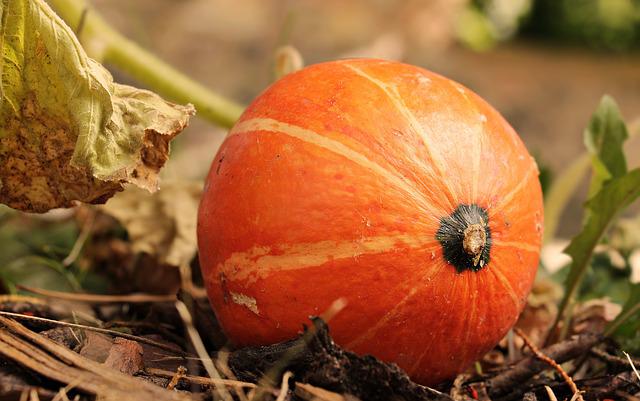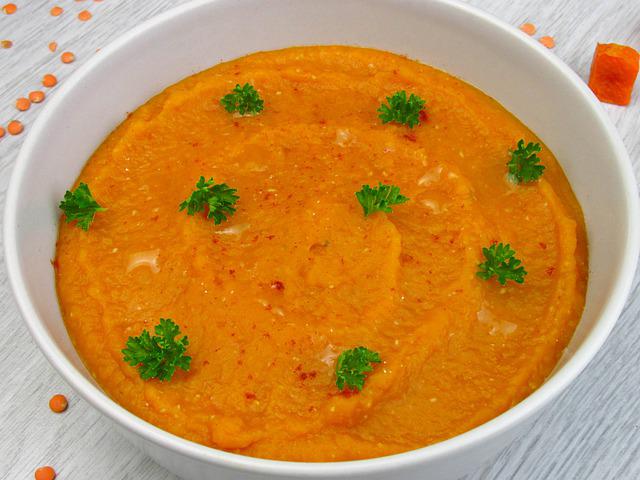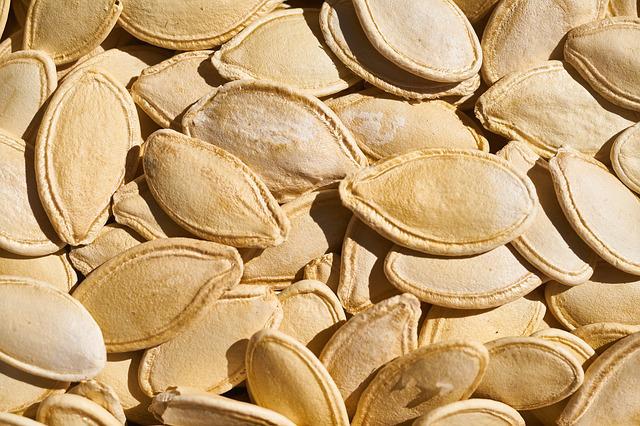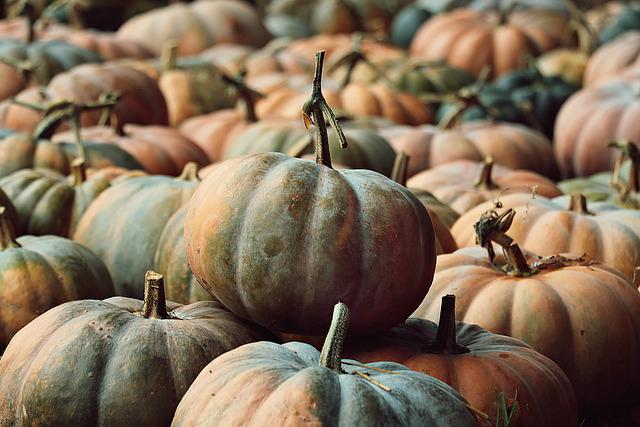Does Pumpkin Go Bad?

No produce doesn’t rot, and pumpkin is no exemption. It starts to smell unpleasant or look slimy. The bottom softens and leaks liquid. Mold in various colors will soon follow, so get rid of it quickly before it gets to that point! Once they become pliable, they begin to degrade very quickly and irreversibly.
Table of Contents
Pumpkin’s Shelf Life
When stored properly, a fresh, whole pumpkin can last for a long time. However, as with most fruits and vegetables, this time goes down by a lot once it is cut or cooked. When you cut them up, exposing their soft interior flesh to air and moisture, the decay rate goes up quickly. And once you cook them (mainly if they have been processed for long-term preservation or are mass-produced), it never comes back down again.
Whole Fresh Pumpkin
It can last up to 2-3 months if you put it on your countertop. It will be best in 1-2 months after you bring it home. It is recommended that they should not be kept for more than 3 months to replace with new ones. If you put it inside the fridge, it could last up to 3-5 months.
Cut-up Pumpkin
If you can, put them in an opaque container with a lid. Then it will last up to 4-5 days. The remaining pumpkins at home should be consumed within 2 weeks after buying them because they will lose quality and nutrients if stored on the shelf for a longer time.
Canned Pumpkin Puree
This can last for years if left unopened. Once opened, it will keep in the refrigerator for up to one week or three to five months in the freezer, depending on how you store it.
Adhere to the expiration dates printed on the can, and you should be fine with canned pumpkin. Plain pumpkin puree is more versatile than seasoned pumpkin puree because it can be used in savory and sweet dishes.
Can pumpkin puree be frozen without losing its flavor? Absolutely! Place your puree in a freezer-safe bag, press out the air, and seal it tightly. Don’t forget to date it to determine how long it has been in the freezer.
Leave it overnight in the refrigerator or defrost it in a bowl of cold water to thaw frozen food.
Pumpkins can be stored indefinitely in the freezer, but their quality and flavor will decline after approximately one year.

Pumpkin Pie
It should be kept in the refrigerator and eaten within 3–4 days. If it has been frozen, you should eat it within six months. Avoid allowing the pumpkin pie to come to room temperature if possible. Food served at your holiday dinner should be kept at around 40°F or 4.5°C. Microwaving your pumpkin pie in short bursts of 10 to 20 seconds on low is an option if you prefer it warm.
To prevent your pumpkin pie from tasting like stuffing, store it in an airtight container. After you cut them up, put each piece on its plate and wrap it in a bag that keeps air out.
Wrap your pie in wax paper first if you’re worried about the pie’s moisture condensing and clogging up your plastic wrap. The surface may not be perfectly smooth when you remove the plastic, but it will not peel off.
Is it possible to store pumpkin pie in the freezer? This should work for a short time. Remember that the fat and flour in the pumpkin pie crust may not hold up to prolonged exposure to cold.
However, if you have a whole pumpkin pie and wish to save it for the following weekend, you may do so. Defrost it in the refrigerator over a few days to prevent moisture accumulation, and store it in an airtight container.
Pumpkin Seeds
If you store pumpkin seeds properly, they should last two to three months in the pantry and up to a year in the refrigerator or freezer. Pumpkin seeds can go bad if left out in the open. They can last for years in the right conditions but check for mold and nasty smells before using them.
It is possible to keep pumpkin seeds for up to three months in an airtight container or zip lock bag in a cool, dry place. When storing them for an extended period, place them in an airtight bag and put them in the freezer.

Carved Pumpkin
Any carved pumpkin should be stored in the refrigerator for two weeks or freezer to avoid discoloration. If moderate temperature, it can last up to 3 to 7 days before it starts to rot and smell bad. It does depend on how well you’ve cleaned and cut your pumpkin and what the temperature is like.
Signs Pumpkins Start to Rotten
The shelf life of your pumpkin is directly related to how fresh it is when you buy it. You can spot a bad pumpkin by looking for the following characteristics.
- Blemishes-If the pumpkin’s skin is scratched or broken, speed up the rotting process. Use it up as quickly as possible by removing any damaged sections or discarding them.
- Brown Spots- When a pumpkin has brown spots on its surface, it’s time to look. However, a spoiled pumpkin will spoil quickly even if it’s still usable.
- Softness- When a pumpkin goes terrible, the softness begins at the bottom. Check the inside of the pumpkin by rolling or lifting it. Any food that has become soft or is dripping liquid is no longer fit for human consumption.
- Mold – if you see fuzzy growths or strange discolorations in your pumpkin, you must throw it away.
- Presence of Insects- If you don’t keep insects away from your pumpkins, they can eat them from the inside out. Houseflies and some types of beetles, like mealworm beetles, will lay their eggs inside the pumpkin (through holes). The flesh of the pumpkins will be eaten by their young, which are usually maggots. If there are maggots inside a pumpkin, you shouldn’t eat them because these maggots can spread diseases.
- Unpleasant Odor- Odors will intensify when you cut into a pumpkin and another sign that it is starting to go wrong. The odor can be from mold, rotting food, or other foods in the pumpkin, but it’s always better to find out than eat it anyway.
- Draining Liquid- If a part of the pumpkin is leaking liquid, this is another sure sign that it is rotting. When the fruit is evil, the soft parts will start to leak water full of nutrients. Pumpkins that leak liquid are not safe to eat because they are usually caused by fungi and bacteria breaking down the pumpkin.
- Change in Color- As the pumpkin rots, it will change color. Most bruises turn on the darker side or have slightly greyed-out coloring. Once you pick up a rotten fruit, its bounce and feeling suggest that it is not very good right now to eat but wait until next year if possible; Slight pimpling of the skin may be due to sunlight burning your skin while slicing.

What Causes Pumpkins to Rot?
If you understand why pumpkins go bad, you can quickly keep them from going bad. Here are some things that affect how long pumpkins can stay fresh:
1. Pests
If you don’t store your pumpkins right and bugs or rats find them, they will go bad quickly because most bugs and rats carry harmful microbes. When bugs eat some parts of your pumpkins, they let these microbes get to other pumpkin parts.
2. You Don’t Store Your Pumpkins Right
If you don’t take good care of the pumpkins, they will go bad quickly. As was already said, some people freeze their pumpkins instead of putting them in the fridge. Some people also leave their pumpkins outside in the winter. If you store pumpkins this way, they will go bad quickly.
3. Disease
Diseases can quickly move from plant to plant. Pumpkin vines can also spread diseases to fruits. Some diseased plants make fruit that goes bad before it is fully ripe, while others go bad quickly after it is fully ripe.
4. Handling with No Caution
When you pick, move, and carve pumpkins, handling them matters a lot. If you poke holes in the pumpkins by accident or hit them hard enough to bruise them, they will go bad quickly.
5. Decomposition
Everything comes to a close. Pumpkins and other organic foods will go bad. The nutrients in pumpkins return to the soil as they break down, a natural process. Even if you store your pumpkins well, they will go wrong at some point.
Even though pumpkins can go bad on their own, you can keep them from going bad quickly by storing them the right way.
